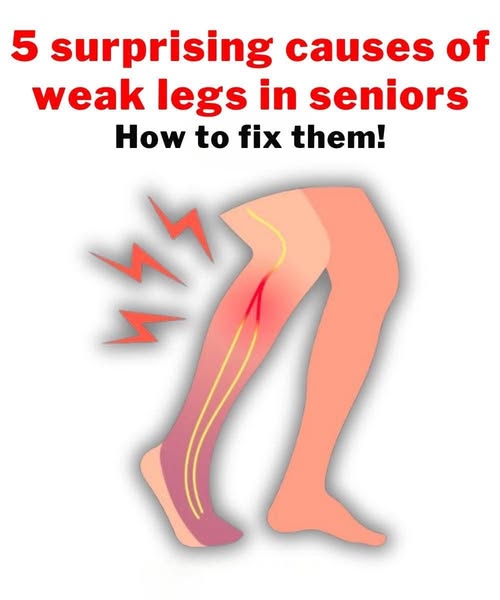Feeling Weaker in the Legs as You Age? Here’s What You Need to Know
It’s completely normal to feel concerned if your legs don’t feel as strong as they once did. Maybe you notice it when standing up from a chair, or perhaps stairs have become more difficult than before.
Although this can be unsettling, the good news is that understanding why it happens is the first step toward improving it. Let’s explore the common reasons behind age-related leg weakness—and, more importantly, what you can do to maintain strength and stability.
Why Do Legs Get Weaker with Age?
Leg weakness isn’t something you just have to accept. Once you know what’s causing it, you can take meaningful steps to turn things around.
1. Muscle Loss (Sarcopenia)
A major reason for leg weakness is sarcopenia—age-related loss of muscle mass. Starting around age 50, most people lose about 15% of their muscle strength each decade, though this varies.
Lack of physical activity speeds up this process, so staying active is crucial to preserving muscle strength and function.
2. Reduced Activity Levels
Another common cause is simply not moving enough. As we age, we often become less active, which creates a cycle: the less we move, the weaker our muscles become—and the harder it gets to stay active.
Low activity also affects circulation, causes joint stiffness, and increases the risk of health issues like type 2 diabetes. Staying active, in any form, is key to keeping your legs strong.
3. Chronic Health Conditions
Certain medical conditions can also weaken the legs. Arthritis, diabetes, and nerve damage (like peripheral neuropathy) can make balance and movement difficult.
In particular, nerve damage from diabetes may increase the fear of falling, which causes inactivity—further worsening the problem.
Managing these conditions with help from your doctor, combined with tailored exercise, can help slow or even reverse this decline.
4. Lower Back Issues
Problems like spinal stenosis, herniated discs, or sciatica can affect the nerves connected to your legs, resulting in pain or weakness.
Although discomfort might make you want to rest, gentle movement is often the best therapy. With a physical therapist’s guidance, safe exercises can help manage symptoms and preserve strength.
If you’re experiencing numbness, tingling, or significant weakness, consult a doctor promptly.
5. Loss of Motivation
Emotional and mental health also impact physical strength. Retirement, grief, or depression can reduce the desire to stay active.
Without a routine, daily movement may decline. That’s why support is essential.
Consider joining a senior exercise class, walking with a friend, or asking family members to encourage you—staying active becomes easier with social motivation.
Helpful Reminders
Although leg weakness is a common part of aging, it’s not something you have to live with. Staying active is the most effective way to prevent or reverse muscle loss.
Addressing chronic health issues, managing back problems, and staying emotionally supported also play important roles in maintaining leg strength.
Easy Exercises You Can Do at Home
Chair Stands:
Practice standing up from a chair slowly and sitting back down. If it’s too hard, use a taller chair or a cushion and work toward doing it without using your hands.
Lunges:
Step forward, lower your back knee gently, and push back to standing. This strengthens each leg individually and improves balance. Hold onto a wall or counter for support if needed.
Walking:
Walking is simple yet highly effective. Begin on flat ground. Use a cane or walker if needed. As you build confidence, try short hills or nature trails.
Final Thoughts
Any movement is better than none—and consistency is key. By staying active and seeking help when needed, you’ll preserve your strength, confidence, and independence for years to come.
If you’re unsure where to start, talk to your doctor, a physical therapist, or a friend. Your future self will thank you.
